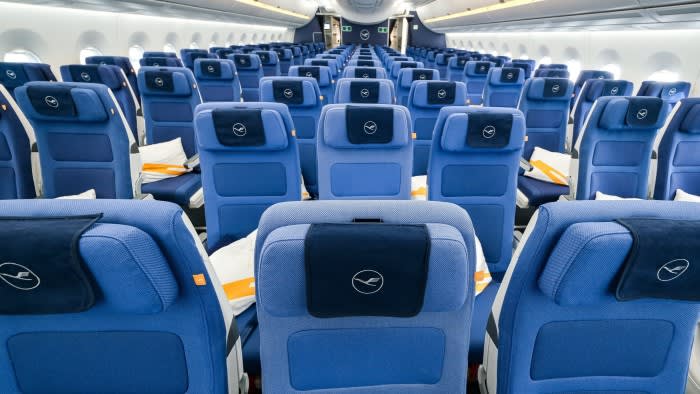A shortage of aircraft seats is adding to bottlenecks in the industry’s supply chains, hampering plans by airlines to refurbish cabin interiors and unveil new upgraded planes.
Aircraft seats, in particular those for first and business class cabins, are among the most important differentiators for airlines in their bid to draw passengers. A combination of factors, including tighter certification rules and shortages of labour stemming from the pandemic, is continuing to hold up their production.
The supply chain wobbles have come as airlines race to unveil new cabins as the industry recovers from the impact of the pandemic. Lufthansa in Germany this month unveiled a new set of long-haul cabins as part of a €2.5bn investment, which was significantly delayed because of supply chain problems.
Extensive refurbishment programmes by several airlines, including the biggest ever $2bn retrofit programme from Emirates, have added to the demands on suppliers.
French jet engine maker Safran, which is also one of the biggest suppliers of aircraft seats, said on Friday that business-class seat deliveries fell 25 per cent in the first quarter as some shipments slipped into the second quarter.
Olivier Andriès, chief executive, said certification rules by regulators had become “much more demanding” and were impacting the “entire interior industry”.
Premium seats are “really important to airlines, they are part of the differentiation for passengers but are also really complicated to engineer, to manufacture and to certify”, said Nick Cunningham, analyst at Agency Partners.
Executives from Boeing and Airbus said this week that the industry’s supply chain remains constrained, including supplies of cabin equipment.
Guillaume Faury, Airbus chief executive, said the company was still struggling with supplies of cabin equipment, not just limited to seats, as well as with supplies of aerostructures. “It reflects the diversity of the difficulties and challenges in the supply chain.”
Boeing, which is struggling to contain its latest crisis following the mid-air blowout of a section of one of its 737 Max aircraft in January, identified seats as a specific reason for constrained production of its 787 wide-body plane.
“Seat suppliers out there are in shorter capacity. A lot of that is buyer furnished, but nevertheless, it holds up an aeroplane,” Boeing chief executive Dave Calhoun told analysts.
Mark Hiller, chief executive of Recaro Aircraft Seating, the world’s leading economy class seat maker, said electronics shortages for embedded in-flight entertainment systems were continuing to hamper deliveries of seats. Airlines typically order the electronics and provide them to the seat manufacturers for installation.
“The increased demand and the ramp up in production means even if [suppliers] are delivering more than a year ago, the demand has increased significantly more and therefore there are still bottlenecks,” Hiller told the Financial Times.
The company has introduced extra shifts, also on weekends, to cope with later deliveries. It has also installed seats on aircraft that are still waiting for the full complement of electronics. Recaro is having to work on a “bespoke solution” for every second customer order, he said, while declining to name any one in particular.
Cunningham said: “Right now, there is such a recovery going on in long-haul air traffic in particular that it is a collective problem for everybody. What airlines really want is to get their new aircraft.”
Sir Tim Clark, the chief executive of Emirates, told the FT in an interview earlier this year that he was frustrated with the state of the aviation supply chain.
“I’m getting a little bit tired of hearing, years after Covid finished, that we’ve still got issues today . . . we are currently retrofitting at vast expense over 160 of our older aircraft. So I would have thought that any supply chain into that kind of organisation would be set forever,” he said.












































